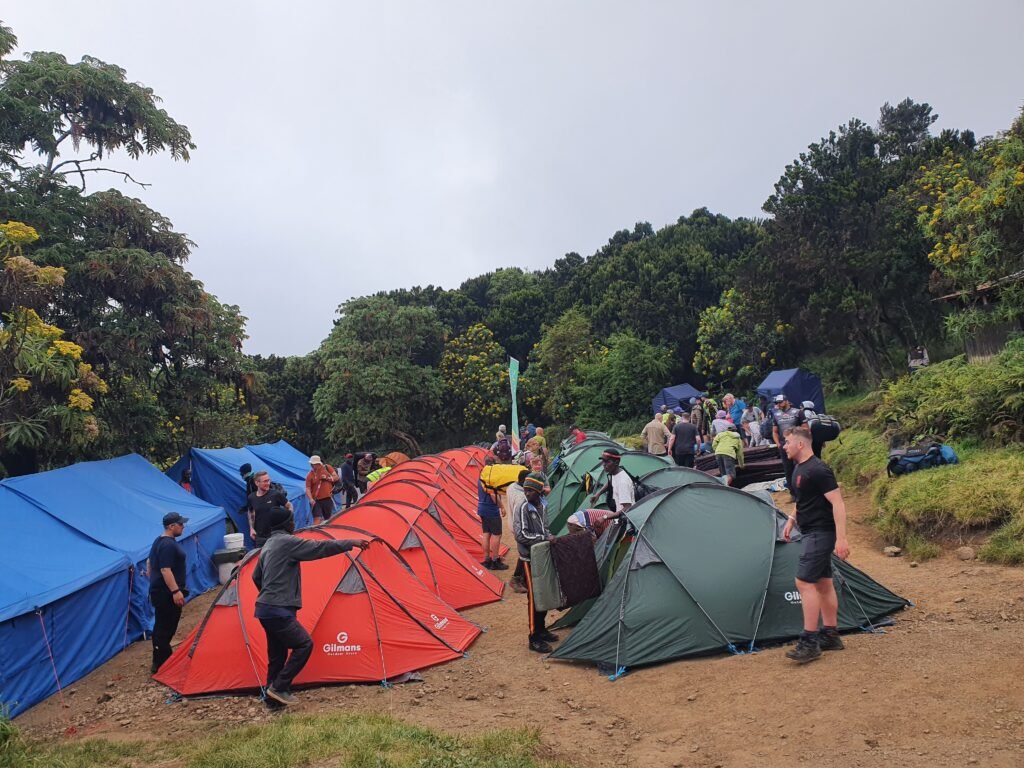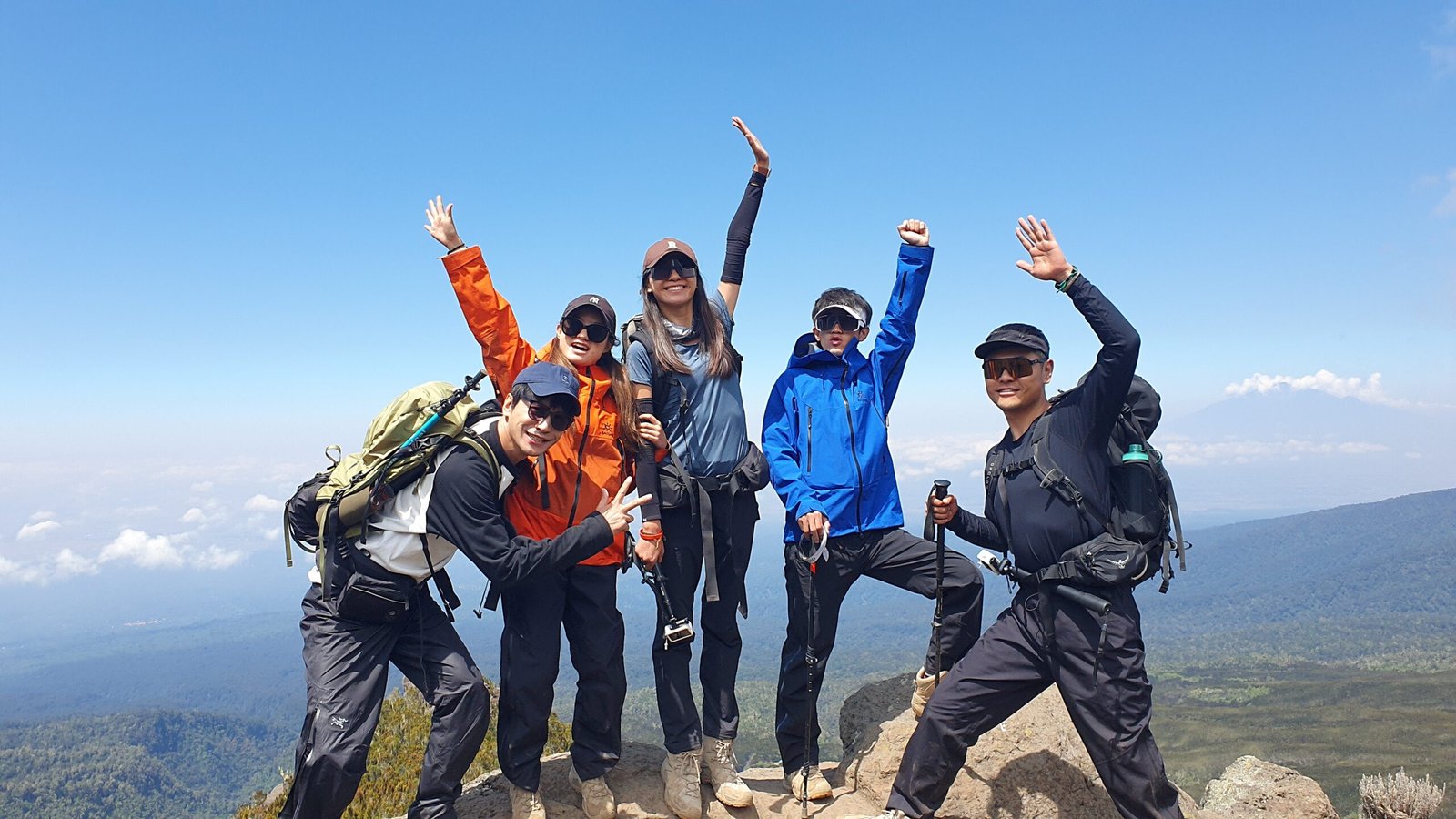The Best 6-Days Kilimanjaro Climbing Machame Route 2025 & 2026
The Best 6-Days Kilimanjaro Climbing Machame Route 2025 & 2026 is one of the most iconic climbs in the world. Among the various routes to the summit, the Machame Route, often referred to as the “Whiskey Route,” is one of the most popular and scenic. This six-day journey is an ideal option for trekkers looking for an adventurous climb with a high summit success rate. If you’re planning to climb Kilimanjaro in 2025 or 2026, the Machame Route offers the perfect blend of challenge, beauty, and cultural experience.
Introduction to Kilimanjaro
Mount Kilimanjaro stands at 5,895 meters (19,341 feet), making it the tallest mountain in Africa and one of the Seven Summits. It attracts thousands of climbers every year, drawn by the allure of reaching the summit and standing at the “Roof of Africa.”

Kilimanjaro offers a unique trekking experience, passing through five distinct ecological zones. The journey begins in lush rainforests and progresses through moorlands, alpine deserts, and eventually reaches the arctic conditions of the summit. Climbing Kilimanjaro is a physical and mental challenge, but for many, it is a life-changing experience.
Overview of the Machame Route
The Machame Route is one of the most popular ways to summit Kilimanjaro, known for its stunning landscapes, diverse ecosystems, and relatively high success rate. Unlike some of the other routes, the Machame Route requires camping rather than staying in huts, providing a more immersive wilderness experience.
Highlights of the Machame Route
Scenic Variety: Trekkers pass through dense rainforests, open moorlands, and rocky alpine terrain, offering ever-changing landscapes and views.
Acclimatization Benefits: The “climb high, sleep low” strategy of the Machame Route helps with altitude acclimatization, increasing the chances of reaching the summit.
Challenging but Rewarding: While physically demanding, especially on the summit night, the Machame Route rewards climbers with breathtaking views and a sense of accomplishment.
Comparison with Other Kilimanjaro Routes
Compared to the Marangu Route (known as the “Coca-Cola Route”), the Machame Route is more challenging due to its steeper paths, but it offers better acclimatization. The Lemosho and Rongai routes are less crowded but longer. The six-day Machame itinerary strikes a balance between challenge and summit success, making it ideal for climbers with limited time but good fitness.
Why the 6-Day Machame Route is Popular
The 6-day Machame Route is a favorite for climbers looking for a moderately paced ascent that still allows time for acclimatization. Here’s why it’s popular:
Time-Efficient: The six-day itinerary fits into a week-long adventure, making it perfect for those with limited vacation time.
High Success Rates: Despite being shorter than the 7-day version, the Machame Route’s acclimatization profile still supports a good summit success rate for fit climbers.
Challenging Terrain: The Machame Route is more physically demanding than other routes, making it appealing to those seeking a rewarding challenge.
The Best Time to Climb Kilimanjaro via Machame Route (2025 & 2026)
Climbing Kilimanjaro is possible year-round, but weather conditions vary significantly across different months. Choosing the right time is critical for ensuring a comfortable and safe climb.
Weather Considerations for Each Season
January to March: This is one of the best times to climb, with mild temperatures, clear skies, and fewer crowds. It’s ideal for those seeking quieter trails.
June to October: The long dry season is the most popular time to climb. Expect clear skies, great summit conditions, but also more climbers on the trail.
November and April to May: These are the rainy seasons, which make the trails muddy and more difficult to navigate. However, those willing to brave the rain will encounter fewer trekkers and a greener landscape.
High vs. Low Season Benefits
High Season (June to October): The weather is perfect for climbing, but the trails are busier, and costs may be higher due to increased demand.
Low Season (April, May, November): Fewer people on the mountain and lower costs, but the weather can be unpredictable with frequent rains.
Day-by-Day Itinerary for the 6-Day Machame Route
The six-day Machame Route follows a well-paced itinerary that allows trekkers to acclimatize while experiencing the beauty of Kilimanjaro. Here’s a breakdown of what each day entails:
Day by day itinerary
Day 1: Machame Gate to Machame Camp
Distance: 11 km (7 miles)
Elevation: 1,640 meters (5,380 feet) to 2,850 meters (9,350 feet)
Trekking Time: 5-7 hours
The trek begins at Machame Gate after registration. The trail winds through the dense rainforest, with towering trees and vines. You might spot wildlife, including monkeys. The day ends at Machame Camp, where you’ll spend your first night on the mountain.
Day 2: Machame Camp to Shira Camp
Distance: 5 km (3 miles)
Elevation: 2,850 meters (9,350 feet) to 3,840 meters (12,600 feet)
Trekking Time: 4-6 hours
Leaving the rainforest behind, the landscape transitions to heather and moorland. The trek to Shira Camp is shorter but involves some steep sections. From Shira Camp, you’ll have spectacular views of Kibo Peak and the surrounding terrain.
Day 3: Shira Camp to Barranco Camp via Lava Tower
Distance: 10 km (6 miles)
Elevation: 3,840 meters (12,600 feet) to 4,630 meters (15,190 feet), then down to 3,960 meters (12,990 feet)
Trekking Time: 6-8 hours
This is a crucial acclimatization day. You’ll trek to Lava Tower at 4,630 meters before descending to Barranco Camp, following the “climb high, sleep low” principle to help your body adjust to the altitude. Barranco Camp is set in a stunning valley beneath the towering Barranco Wall.
Day 4: Barranco Camp to Barafu Camp
Distance: 9 km (5.5 miles)
Elevation: 3,960 meters (12,990 feet) to 4,650 meters (15,250 feet)
Trekking Time: 6-8 hours
The day starts with an exciting climb up the Barranco Wall, a steep but non-technical section that offers breathtaking views. After crossing several valleys, you reach Barafu Camp, the base camp for the summit push.
Day 5: Summit Day – Barafu Camp to Uhuru Peak, Descend to Mweka Camp
Distance: 5 km (3 miles) ascent, 12 km (7.5 miles) descent
Elevation: 4,650 meters (15,250 feet) to 5,895 meters (19,341 feet), then down to 3,100 meters (10,170 feet)
Trekking Time: 10-14 hours
Summit day begins around midnight. The ascent to Uhuru Peak, the highest point on Kilimanjaro, is the toughest part of the climb, but reaching the summit at sunrise is an unforgettable experience. After taking in the views, you’ll descend to Mweka Camp.
Day 6: Mweka Camp to Mweka Gate
Distance: 10 km (6 miles)
Elevation: 3,100 meters (10,170 feet) to 1,640 meters (5,380 feet)
Trekking Time: 3-5 hours
The final day is a gentle descent through the rainforest to Mweka Gate, where you’ll receive your summit certificates and be driven back to Moshi for a well-deserved rest.
Package Inclusions
All transfers to the mountain and back to your Moshi hotel
Professional, experienced, mountain guides
Guides, Porters, Cook salaries and park fees
Quality, waterproof, four-season mountain sleeping tents (on twin sharing basis)
Sleeping Mattress
Emergency Oxygen Cylinder
All meals while on the Mountain
Quality Mess tents with table and chairs
Large portions of fresh, healthy, nutritious food
Clean, purified drinking water
Conservation fees (part of park fees)
Camping or Hut fees (part of park fees)
Rescue fees (part of park fees)
VAT (18% charged by the Government)
Kilimanjaro summit certificate
Exclusions
Tanzania Visa
International and domestic flights
Hotel (available as an optional addon)
Transfers (available as an optional addon)
Personal trekking equipment such as sleepings bags, hiking boots, clothes, etc (available for renting)
Tips and gratuities
Travel insurance
Personal Expenses (e.g. laundry, telephone, beverages, etc.)
Meals not listed in the itinerary
Liquors, beers and bottled beverages
Surcharge for online payment of advance and balance (5% on each payment)

